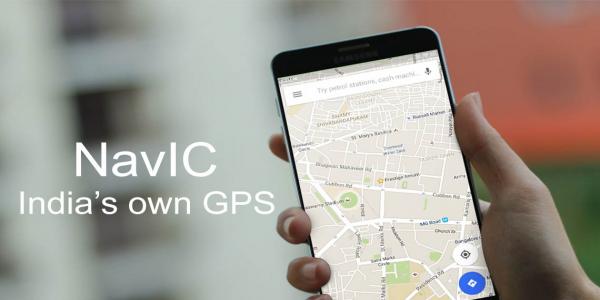Facts About India-made GPS System, Which May Come With Your Future Smartphones
Anil - Jul 19, 2019

Have you wondered why we have ISRO while we already have the GPS?
- How to Fake GPS Location on iPhone or Android
- Delhi Is The World’s Most Polluted Capital City For Three Years In A Row
- Indian Farmers Install High-Tech, Night-Vision CCTV Cameras To Protect Themselves
Every map service like Google Maps or Apple Maps is in association with the GPS system. While a lot of smartphone users have heard about the GPS as a satellite navigation system, but not many of them know that there are a number of similar systems which have been used in the world, including BeiDou Navigation System (BDS) of China and European Union, or Russia’s own GLONASS.

As a result, India will come with the idea of a homegrown system. In Bengaluru, the ISRO (Indian Space Research Organization) has worked on a project called NavIC, which stands for Navigation with Indian Constellation. The India-made system is based on GPS, but have you wondered why we have ISRO while we already have the GPS? Back in 1999, India was stuck in the Kargil War and required the GPS data about the Pakistanis from the US, but the superpower did refuse. Due to that, India found the need for its own system. Now, Isro is said to cooperate with chipmakers to make smartphones integrated with NavIC before selling them in the country.

Here’re some interesting facts about the upcoming plan.
1. The satellite navigation system of India had been launched in 2016, following the launch of the INRSS 1G.
2. ISRO along with Qualcomm and Broadcom are talking to the plan of bringing NavIC to upcoming smartphones inside the Indian market. Of course, there will be a new chip supporting NavIC.
3. NavIC is expected to achieve more accuracy rate than GPS.
4. Drivers will benefit the visual turn-by-turn voice navigation from NavIC.
5. Most commercial vehicles have to come with NavIC trackers if they were registered after April 1, 2019. At least 30 Indian companies are allowed to make NavIC trackers.
6. To support NavIC, eight IRNS satellites will provide a wide range of data such as navigation, location, timing services, and more.
Featured Stories

ICT News - Dec 25, 2025
The Visibility Concentration Effect: Why Half the Web Isn’t Qualified Anymore

ICT News - Jul 05, 2025
Windows 11 is Now the Most Popular Desktop OS in the World

ICT News - Jul 02, 2025
All About Florida’s Alligator Alcatraz: A Smart Move for Immigration Control

ICT News - Jun 25, 2025
AI Intimidation Tactics: CEOs Turn Flawed Technology Into Employee Fear Machine

ICT News - Jun 24, 2025
Tesla Robotaxi Finally Hits the Streets: $4.20 Rides That'll Make You Hold Your...

ICT News - Jun 24, 2025
World's First Flying Humanoid Robot Takes Flight

ICT News - Jun 24, 2025
When Closed Source Met Open Source: Bill Gates Finally Meets Linus Torvalds After...

Gadgets - Jun 23, 2025
COLORFUL SMART 900 AI Mini PC: Compact Power for Content Creation

ICT News - Jun 22, 2025
Neuralink Telepathy Chip Enables Quadriplegic Rob Greiner to Control Games with...

ICT News - Jun 20, 2025
Comments
Sort by Newest | Popular